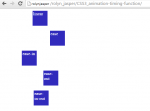Creating your own calendar in VB.NET
This is a tutorial that will teach you how to create and design your own calendar using vb.net.
Now, let's start this tutorial!
1. Let's start with creating a Windows Form Application for this tutorial by following the following steps in Microsoft Visual Studio: Go to File, click New Project, and choose Windows Application.
2.








